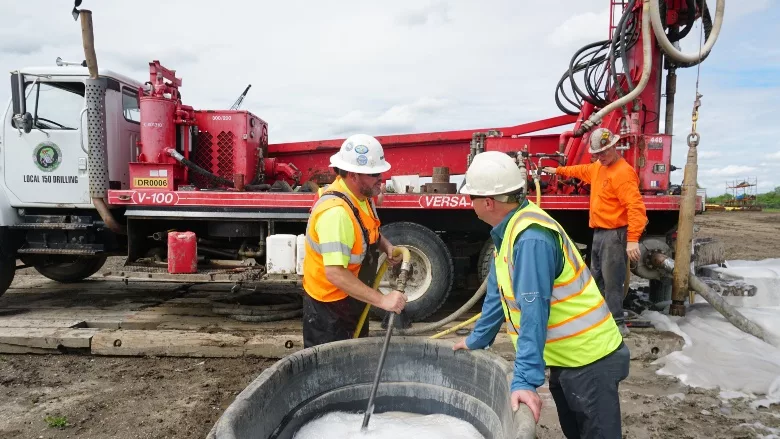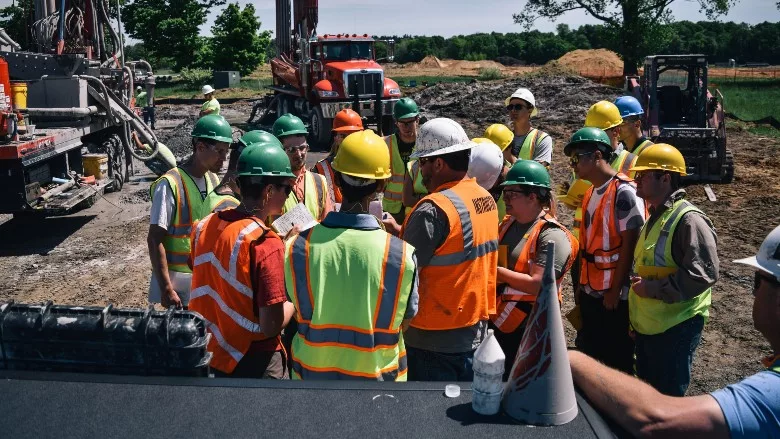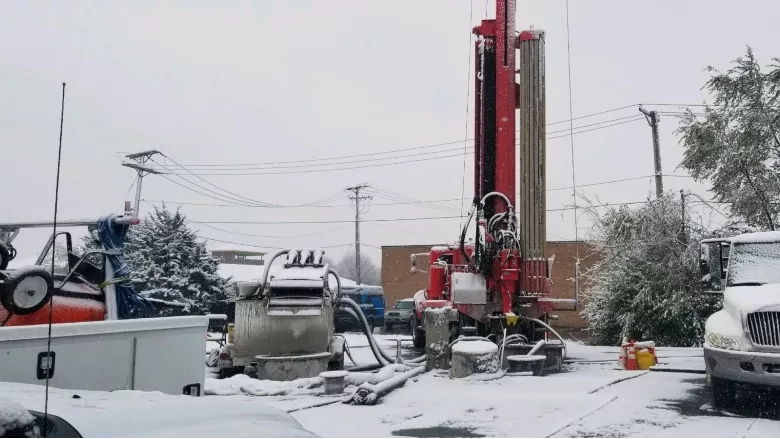Standard Operating Procedures Securing Our Progression
SOPs Important to Help Companies Thrive in an Aging, Tribal Industry

Many common drilling jobsite tasks lend themselves well to documentation with standard operating procedures. In fact, SOPs can help companies set themselves up for enduring success.
Source: Brock Yordy

Standard operating procedures can benefit a company when it comes to training new hires, or getting veterans up to speed on little-used or unfamiliar processes.
Source: Brock Yordy

SOPs should include the specific equipment, tools and materials, as well as the “who” for each procedure.
Source: Brock Yordy
The 2022 State of the U.S. Water Well Industry Report conducted by the Water System Council found that 52% of the industry has already seen their 55th birthday. The industry workforce quickly approaches the “vintage” designation.
Now, drill into your business. Consider the average age of you, your employees and equipment. How well have you maintained those assets? Vintage can mean “well-maintained” and “refined.” Sometimes, it doesn’t. Unforeseen changes can happen to any of these key components. SOPs, or standard operating procedures, solve this issue. I like to think of these vital documents in slightly different terms: securing our progression. SOPs ensure a level of professionalism that can make your company last.
You might wonder, “Why would I operate the same way I did 40 years ago as technology and best practices have progressed?” Yet, best practices and procedures have the same timeless quality of many classic rock songs. The difference between listening to that song, whether from vinyl, disc or digital, and our vintage knowledge? The song was recorded.
We base our industry’s credibility and success on years of tribal knowledge built on experience. However, we face a stark reality, similar to other tribal trades where most critical knowledge is learned in the field. As the “vintage” workforce retires, the “vintage” knowledge retires with them. I challenge you to create standard operating procedures to record this tribal knowledge. It will secure your company’s ability to progress.
SOPs serve a crucial role in any legacy business. In one legendary story, Ford executives visited Toyota’s production line to study that company’s “lean” manufacturing methods. The Ford leadership had wondered how Toyota had grown so efficient with few quality issues at the end of the build. Ironically, those executives learned that Toyota had developed its system by studying Ford’s original assembly line procedures. As Ford progressed as a company over generations, they stopped publishing the book that had made them a legacy company. You can find these teachings in any Lean or Six Sigma program. Over the years of success, progression and succession, they failed to transfer the tribal knowledge that had built an efficient and profitable company. Established best practices and SOPs have endless benefits.
Benefits
The first significant benefit to documenting SOPs or best practices? You build a team of employees that knows the best way to complete a project. Yes, we must be agile in drilling and change tactics when downhole progress slows. However, creating procedures that mitigate risk and increase efficiency gives us a foundation for adapting to problematic situations.
Think of it like this: How can you grow if you have three crews who lay out and complete similar projects differently? What happens when you have to swap crewmembers or leaders on a project? It becomes a major disconnect. With an aging workforce and low recruitment of new hires, a good company needs the ability to switch out employees when required without impacting production or quality. When we standardize procedures, we should aim to hear all the different ways to complete a project and establish the best practice.
Collaboration
All too often, leadership creates new procedures with loosely defined steps that prevent impacts, and then holds the teams accountable. Consider making an SOP for tripping in and out of the hole alone without the team. If you search “tripping out/in,” the OSHA.gov site has guidelines. A statement at the top reads: “Tripping refers to the process of removing and/or replacing pipe from the well when it is necessary to change the bit or other piece of the drill string, or when preparing to run certain tests in the well bore.” Below the statement, it lists activities required to do the procedure for tripping out with another statement that says, “Tripping in essentially comprises the same steps in reverse order.” The site does a great job of listing potential hazards, possible solutions and directing individuals to additional information. It offers a good starting resource. However, what is it missing?
A good SOP requires specifics for your company, such as equipment, tools, types of material and the people involved. Sitting down with your team and building out the steps on a whiteboard allows for a discussion on all phases from start to finish. Often, I ask the team to start at the end and work backward before doing the exercise again from the start. You want to flush out all ways workers do — or could do — a specific procedure. Four drillers in a room will present a minimum of 12 different ways to complete the same task. Get all the possibilities on the table. The team can choose the preferred method to document and establish buy-in.
SOP for creating SOPs
There are many ways to start an SOP, yet the critical thing is just to get started. To capture this vintage tribal knowledge, we must ask ourselves where each team member excels. Next, what would happen to those processes if that individual left tomorrow? Finally, what tasks and procedures do team members, especially new ones, struggle to learn? When you and your team return to the office Jan. 2, create that list of procedures that require documentation. Start with the most critical tasks to document and continue as new ones arise.
Think about drilling and well logs from 60 years ago — all the handwritten details of formations and processes. As logs and documents became more often digital, we lost the art of explanation and detail.
The process itself should start with requirements to complete the task, including what protective equipment, tools and materials. Establish the type of equipment or pieces of equipment and people needed. Next, create the steps from start to completion. Remember to include measures for project wrap-up and to store all equipment, tools and materials. The number of steps in the procedure should be sufficient to teach a new team member and defined enough to eliminate potential impacts. Consider the complexity of the task and create SOPs with a minimum of 10 steps and fewer than 20. Finally, an SOP can evolve as new progress increases its ability.
It is time to start documenting the way we used to. Think about drilling and well logs from 60 years ago — all the handwritten details of formations and processes. As logs and documents became more often digital, we lost the art of explanation and detail. Our predecessors built this industry somewhere between “the art” and “the process.” Excellent drilling companies require documentation of both.
We need to be able to train new people, establish best procedures and pass on the vintage knowledge that made our companies great. Think about it. After the Roman Empire fell, methods for mixing concrete mix passed out of memory. It took 1,500 years for man to re-create it. In the 21st century, modern concrete still does not compare to that used at the end of the Roman Empire. Developing company-specific SOPs will secure our progression over time, despite an evolving workforce.
Looking for a reprint of this article?
From high-res PDFs to custom plaques, order your copy today!









